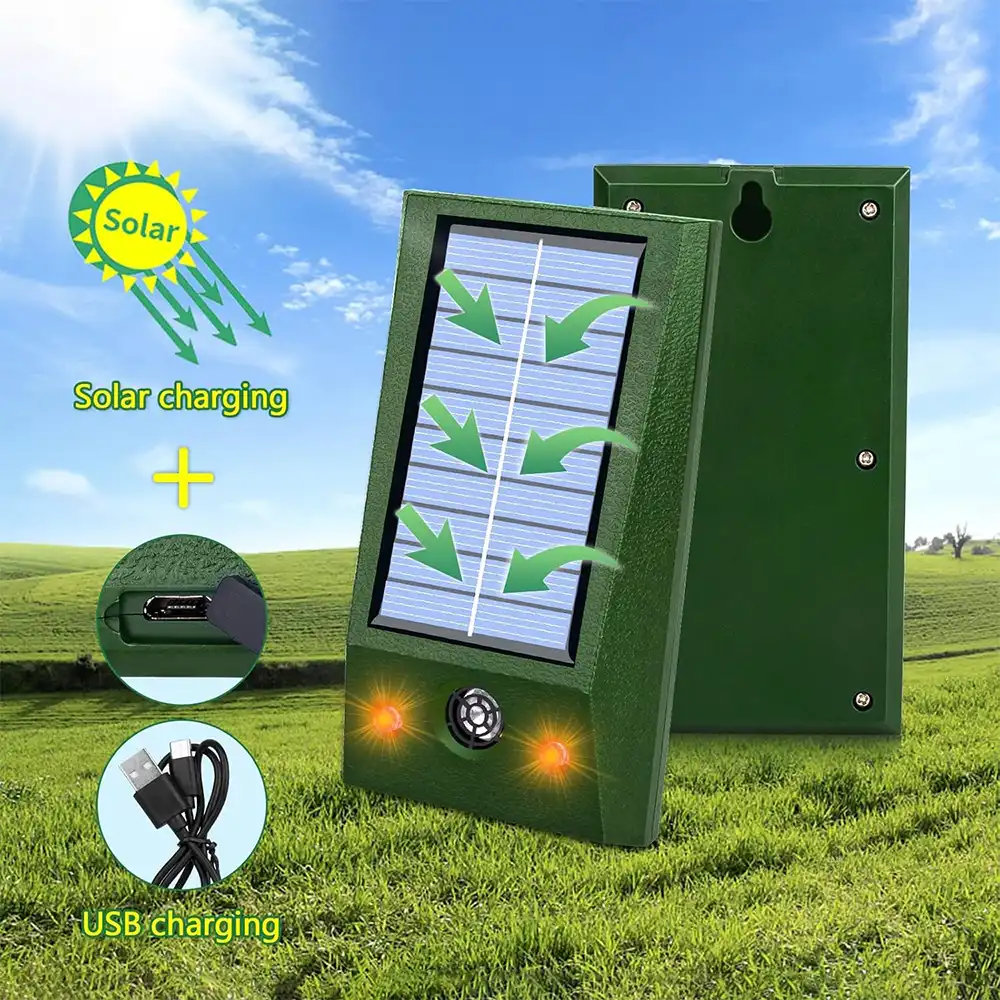Discover how solar-powered ultrasonic repellers protect your garden without harming dogs. Learn about 45kHz safety thresholds, breed-specific installation guidelines, and science-based tips for pet owners.
Why Modern Pet Owners Choose Solar Ultrasonic Repellers
For dog lovers, balancing yard protection with pet safety is non-negotiable. Traditional repellents—chemical sprays, electric fences, or loud noise machines—often put dogs at risk of stress, allergies, or injury. Enter the Nature-Friendly Solar-Powered Ultrasonic Animal Repeller: a humane, solar-charged solution that deters pests like raccoons and deer while prioritizing your dog’s well-being.
But how does ultrasonic technology interact with canine hearing? Let’s break down the science.
Canine Hearing 101: Why 45kHz Matters for Your Dog’s Safety
Dogs hear frequencies up to 45kHz, far beyond the human range (20kHz). Ultrasonic repellers emit soundwaves above 20kHz—typically between 25kHz and 55kHz—to repel animals without disturbing humans. However, not all devices are dog-safe.
Key Insight:
Cheap ultrasonic repellers often use static frequencies (e.g., 40kHz), which may overlap with a dog’s sensitive hearing range. The Dacaraca repeller uses frequency-hopping technology, cycling through 25kHz–55kHz to prevent habituation and minimize prolonged exposure near the 45kHz threshold.
The “Safe Distance vs. Dog Size” Formula: A Veterinarian-Approached Table
To ensure your dog’s comfort, installation distance matters. Smaller breeds (e.g., Chihuahuas) have more acute high-frequency hearing, while larger dogs (e.g., German Shepherds) tolerate closer proximity.
| Dog Size | Weight Range | Minimum Safe Distance |
|---|---|---|
| Small | <20 lbs | 15–20 feet |
| Medium | 20–60 lbs | 10–15 feet |
| Large | >60 lbs | 5–10 feet |
Note: Avoid direct exposure to sleeping/eating areas. Monitor your dog’s behavior (e.g., ear twitching, avoidance) and adjust placement if needed.
4 Pro Tips for Maximizing Safety & Effectiveness
- Test the “Blind Zones”: Dogs can’t hear ultrasounds behind thick walls or dense shrubs. Place units near open entry points (e.g., garden gates).
- Leverage Solar Efficiency: Install in full sunlight—24/7 operation ensures consistent pest deterrence.
- Combine with Visual Deterrents: Motion-activated lights enhance the repeller’s effect without extra noise.
- Rotate Frequency Settings: Use the device’s adjustable mode to shift frequencies weekly, preventing pest adaptation.
FAQs: Addressing Dog Owners’ Top Concerns
Q: Will the repeller hurt my dog’s ears?
A: No. The variable-frequency design avoids sustained 45kHz exposure. At recommended distances, most dogs perceive it as a mild, non-threatening sound.
Q: Can puppies or senior dogs use the same guidelines?
A: Puppies (<6 months) and senior dogs may have heightened sensitivity. Increase minimum distances by 5 feet.
Q: How do I know it’s working without bothering my dog?
A: Watch for reduced pest activity (e.g., fewer dug-up plants). Dogs rarely react visibly unless placed too close.
Why This Repeller Outshines Competitors
- ✅ Solar-Powered & Weatherproof: Zero wiring; works in rain/snow.
- ✅ 360° Coverage: 30-foot radius protects gardens, trash cans, and patios.
- ✅ Humane Frequency Design: Verified by animal behavior experts.
Ready to reclaim your yard? Get your dog-safe ultrasonic repeller here.

